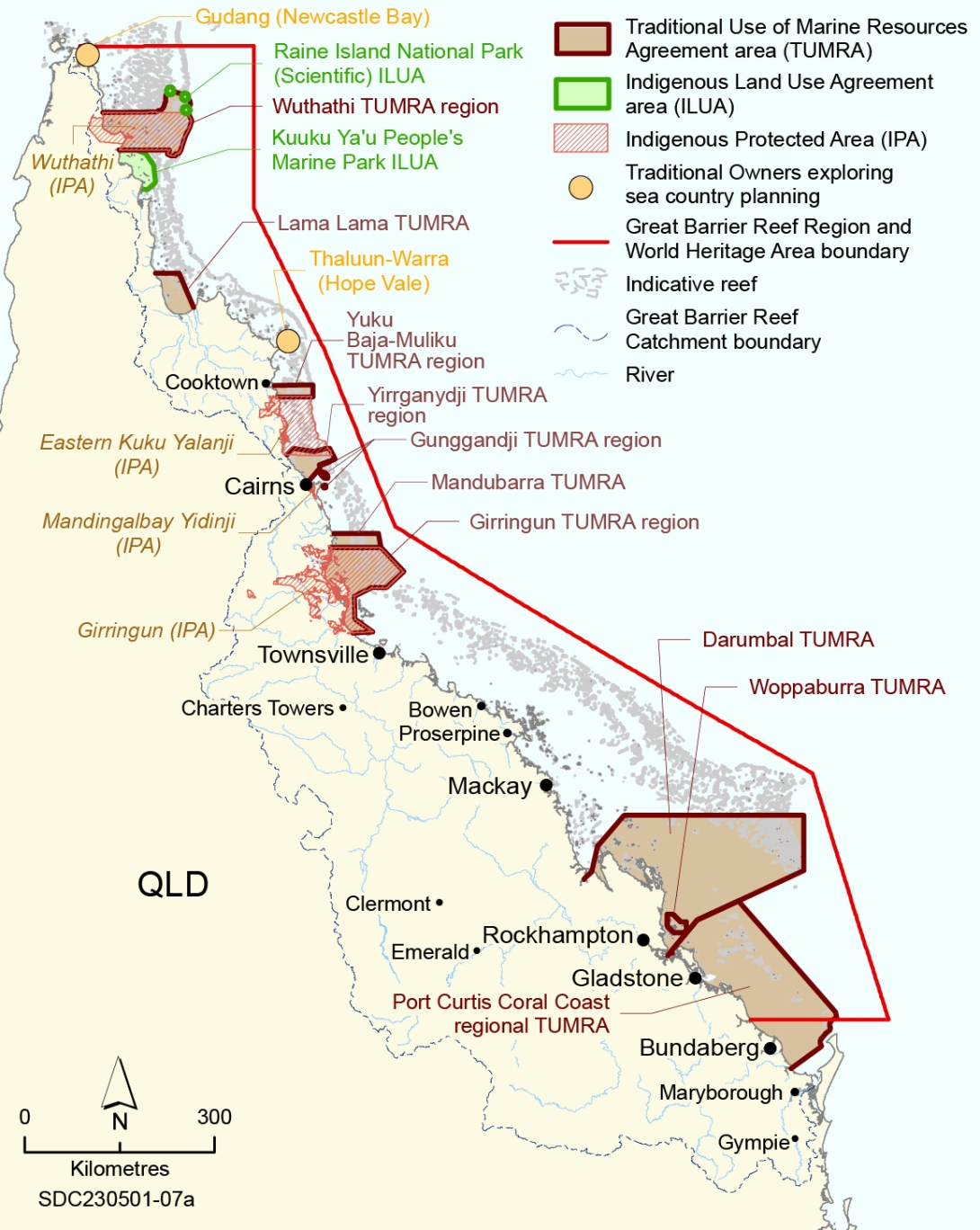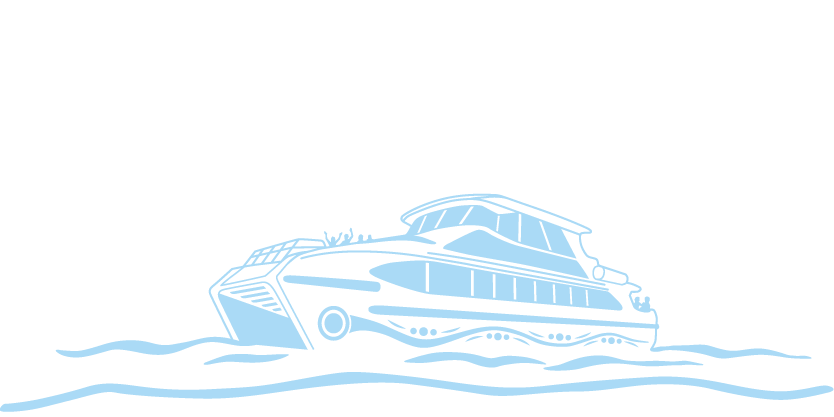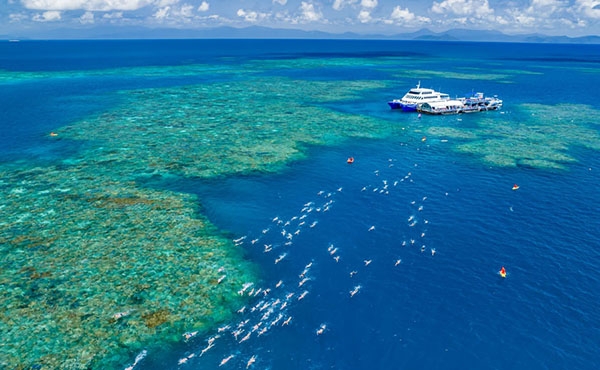First Nations peoples have cared for their Sea Country and heritage for tens of thousands of years.1104 Since 2019, improvements have been made in Traditional Owner-led and -partnered monitoring and management programs relevant to traditional use within the Region (Section 7.3.8). These include Indigenous Ranger programs, scientific research and the Traditional Use of Marine Resources Agreements program.
First Nation peoples have cared for Sea Country for tens of thousands of years
Sea Country values mapping projects, enabled by Traditional Use of Marine Resource Agreements, are improving our understanding of traditional use and Indigenous heritage values (Section 4.3). In 2020, the Mandubarra Aboriginal Land and Sea Inc. published its first mapping project highlighting places, animal species and plants of cultural significance. More Sea Country values mapping exercises are underway with other Traditional Use of Marine Resources Agreement groups. However, information on trends in traditional use remains a data gap.
Management | The Native Title Act 1993 (Cth) recognises the pre-existing rights of Aboriginal and Torres Strait Islander peoples in relation to traditional use of marine resources within their Land and Sea Country. Most Traditional Owner groups along the mainland coast continue to exercise their native title rights. Traditional use within the Region is managed collaboratively with Traditional Owners. Indigenous Protected Areas are areas of Land and Sea Country managed by First Nations groups, through voluntary agreements with the Australian Government, in accordance with Traditional Owner objectives. There are seven Indigenous Protected Areas within the Region and neighbouring Catchment,1487 with two added since 2019 in Wuthathi and Olkola country.
The Marine Park legislation provides for the cooperative involvement of First Nations communities and partnerships with Traditional Owners in the sustainable management of marine resources through Traditional Use of Marine Resources Agreements. Through the marine resource agreements process, Traditional Owners agree on complex matters, such as maritime estate (where lore governs boundaries), Sea Country planning, harvest areas, community permits, protocols and Indigenous heritage management. These agreements may include voluntary moratoriums on the take of some species, such as dugongs and turtles. These moratoriums can be applied or removed in accordance with changing environmental circumstances and other factors.
Traditional use of marine resources continues to provide for and benefit Traditional Owners through environmental, social and cultural factors. Since 2019, one new Traditional Use of Marine Resources Agreement has been accredited (Darumbal), bringing the total number of groups within the program to 10 (Figure 5.24). These 10 groups and the coastal of the 2 Indigenous Land Use Agreements cover around 46 per cent of the Marine Park coastline (an increase of 18 per cent).1488
Around 46 per cent of the Region’s coastline is covered by Traditional Owner agreements
Figure 5.24
Traditional Use of Marine Resource Agreements, Indigenous Land Use Agreement groups and Indigenous Protected Areas within the Region in 2023

The Indigenous Ranger program, which is operated by the Australian and state governments, enables Indigenous rangers to uphold compliance on their Sea Country, assess conditions and trends and provide on-Country guidance to management. Since 2019, training opportunities have expanded with rangers completing diver training. Upskilling activities such as these increase the capacity of Indigenous rangers to care for Country. For example, in 2022, Indigenous rangers from Dawul Wuru Aboriginal Corporation partnered with scientists as part of a reef conservation collective that collected coral spawn, and incubated the larvae until they were ready to settle near Hastings Reef, on Yirrgnydji Sea Country.1489
The Reef Authority engages with Traditional Owners through an Indigenous Reef Advisory Committee that provides objective advice as well as insights and recommendations on matters relating to the management of the Marine Park and on the implementation of actions by the Reef Authority to assist Aboriginal and Torres Strait Islander aspirations. Indigenous representation is also within the Marine Park Authority Board, Tourism Reef Advisory Committee and Local Marine Advisory Committee. Since 2019, there has been an increase in the commitments towards co-management of Sea Country and partnerships with Traditional Owners, including through the Reef 2050 Plan, Reef 2050 Traditional Owner Implementation Plan and the Reef Authority’s Great Barrier Reef Blueprint for Climate Resilience and Adaptation (Reef Blueprint 2030) (Section 7.3.13 and Box 10.2).
The Reef 2050 Traditional Owner Implementation Plan (2023) outlines actions to achieve the Traditional Owners’ aspirations and priorities for the Great Barrier Reef as part of the Reef 2050 Plan.1120 One of its aims is to empower Traditional Owners and strengthen their involvement in the management of Sea Country so that Indigenous heritage is kept strong, safe and healthy. The plan also aims to strengthen Traditional Owner connections with Country through cultural heritage mapping, planning and improved protection of sensitive sites.


